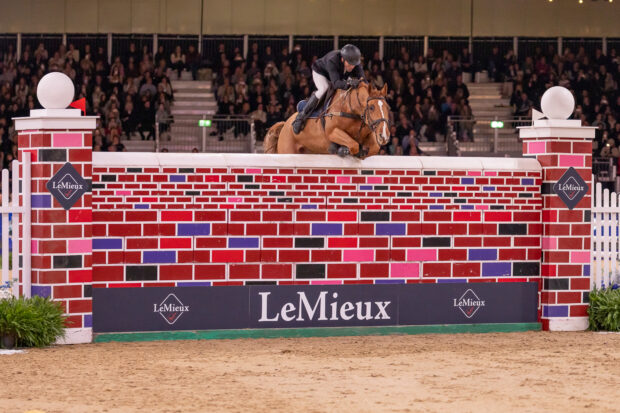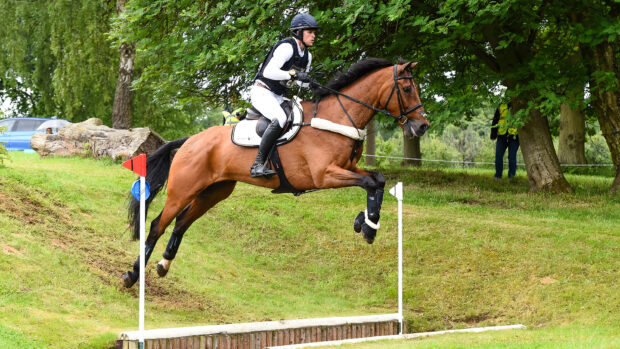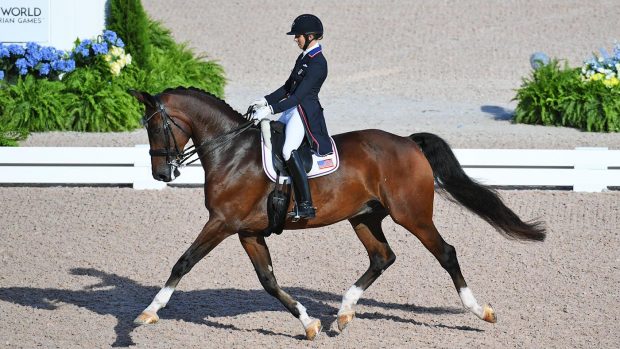Riders and owners considering taking their horses’ shoes off are reminded that barefoot trimmers are not regulated in the way farriers are – and that only the latter are legally able to put shoes back on if needed.
Should a farrier’s care fall short, the Farriers Registration Council can step in and hold him or her accountable, as the Royal College of Veterinary Surgeons can for vets, but there is no such provision for trimmers. There are trimming courses and qualifications on offer, including the Lantra awards level 5 diploma in equine podiatry offered by the Equine Podiatry Association, but they are not required by law.
Master farrier Ben Benson, who has worked with the World Class Programme and at championships and is president of the British Farriers and Blacksmiths Association, told H&H: “This is definitely something that needs to be said.
“It’s absolutely fine to take your horse barefoot, but you need to make sure you’ve got the right people around you, and that’s where farriers come in as we’re regulated and quality assured, and importantly for the horse owner, we are legally required to be fully insured. If we do something wrong, we’re answerable in a court of law.
“There are some very good barefoot trimmers, but they’re not regulated. Anyone could take a rasp and pair of nips and do it.”
Mr Benson said some farriers may not be the best at communicating, but that they will have had thousands of hours of mentored training over years, and been examined by RCVS members and expert farriers, whereas the hours and exams needed for barefoot qualifications are “varied”.
“Farrier have been trimming horses’ feet for thousands of years,” he said.
British Equine Veterinary Association (BEVA) chief executive David Mountford told H&H BEVA agrees with Mr Benson’s points.
“From an animal health and welfare perspective, it is bizarre that anyone is allowed to trim a horse’s foot, but only a trained, registered and regulated farrier is allowed to do so if, after the trimming, a shoe is put on!” he said.
“Owners should remember that farriers regularly trim the feet of unshod young horses, those out of work, and those for whom going unshod is both desired by the owner and not detrimental. Therefore, the farrier will usually be the best person to help if an owner is thinking about keeping their horse without shoes.”
Mr Mountford added that if a profession is regulated, it means every practitioner has had to demonstrate a high standard of skills and knowledge, and must be up to date with continuing education, and that there is a system to hold them accountable for their actions.
“Unregulated individuals, including barefoot trimmers, are not bound by any of these requirements,” he said. “That doesn’t mean that every barefoot trimmer is dangerous, some are very able, but owners should be aware of what protection they have when paying someone to trim their horse’s feet.”
BEVA’s veterinary projects officer Lucy Grieve, agreed, adding that some ponies and horses are fine without shoes.
“But they still require a skilled, trained and regulated professional, who is insured and can be held accountable should they perform work which is substandard and risks the horse’s health and welfare,” she told H&H.
“Maintaining an unshod foot is just as complex and demanding, sometimes more so, for both farrier and owner. Because here in the UK, and elsewhere, we keep horses in a very different environment to that which they originally evolved in, we cannot and should not expect their feet to maintain themselves. Each horse is different, [as is their] hoof shape, growth and horn quality.
“Determining whether a horse needs shoes or not should be a decision made with the relevant trained professionals, farrier, vet and sometimes nutritionist, with the owner, and this should be reviewed annually if not more often, to make sure permanent damage isn’t done due to lack of communication of those previously mentioned factors. By all means have the conversation, but listen to trained and experienced professionals, monitor carefully and be willing to change your approach if needed.”
The Equine Podiatry Association does provide self-regulation of those practitioners who are full members and hold their Diploma in Equine Podiatry, which is an Ofqual-accredited level 5 qualification. Full members must do a minimum of 40 hours of continuing professional development each year, provide evidence they are appropriately insured for public liability and professional indemnity, and follow the organisation’s code of conduct. Complaints against members are investigated and, if upheld, sanctions can be imposed including removal from the register – though this does not prohibit the individual from practising.
You might also be interested in:

More movement found in unshod hooves, but study doesn’t claim ‘barefoot is better’

Hopes new research on hoof movement and surfaces could lead to prevention of injuries

Subscribe to Horse & Hound magazine today – and enjoy unlimited website access all year round
Horse & Hound magazine, out every Thursday, is packed with all the latest news and reports, as well as interviews, specials, nostalgia, vet and training advice. Find how you can enjoy the magazine delivered to your door every week, plus options to upgrade your subscription to access our online service that brings you breaking news and reports as well as other benefits.




